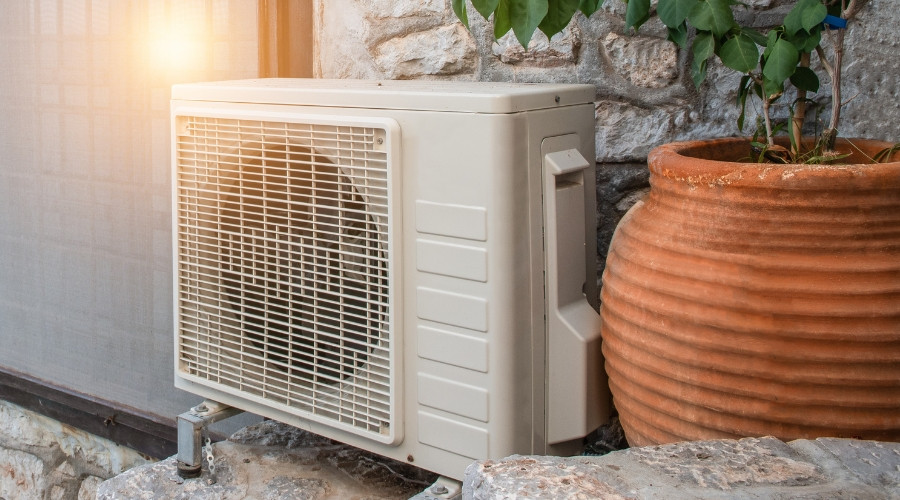Pompton Lakes HVAC experts share how heat pumps work, their types, and signs repairs are needed.
Pompton Lakes, United States - October 30, 2025 / SM Heating and Air Conditioning /
Heat Pumps Explained
Looking to balance year‑round comfort with measured energy use? A modern heat pump can provide both heating and cooling from a single platform, simplifying equipment and maintenance. This overview explains how a heat pump system works, the differences between a ducted heat pump and a ductless heat pump (including a mini-split heat pump), the practical advantages of heat pump installation, and the early warning signs that indicate a need for heat pump repair.
What Is a Heat Pump?
A heat pump transfers heat rather than creating it through combustion. In heating mode, the outdoor unit extracts available heat from outside air and concentrates it indoors; in cooling mode, the cycle reverses, moving indoor heat outside much like a standard air conditioner. Because the same equipment handles both seasons, many homes replace separate furnaces and AC setups with one coordinated heat pump system.
Configuration options make the technology adaptable. A ducted heat pump integrates with existing ductwork for whole-home air distribution, utilizing supply registers and returns similar to those found in traditional central systems. A ductless heat pump—often referred to as a mini-split heat pump—utilizes compact indoor air handlers mounted in selected rooms, allowing for zoned comfort without the need for ducts. Both approaches rely on the same refrigerant‑based transfer of heat, but differ in how conditioned air reaches living spaces. With proper sizing, controls, and placement, either format can offer steady temperatures and quiet operation.
Benefits of Installing a Heat Pump
 A well-designed heat pump installation simplifies comfort by consolidating heating and cooling into a single, efficient system. Transferring existing heat, rather than generating it from fuel, often results in smoother cycling, fewer temperature fluctuations, and a more subdued sound profile. For many households, this also means streamlined maintenance and less mechanical complexity.
A well-designed heat pump installation simplifies comfort by consolidating heating and cooling into a single, efficient system. Transferring existing heat, rather than generating it from fuel, often results in smoother cycling, fewer temperature fluctuations, and a more subdued sound profile. For many households, this also means streamlined maintenance and less mechanical complexity.
Flexibility is a major advantage. A ducted heat pump is a natural fit where ducts already exist, providing familiar whole‑home coverage. A ductless heat pump excels in spaces where installing ducts would be disruptive or costly, such as finished basements, sunrooms, additions, or older buildings. A mini split heat pump also supports independent zone control, allowing for setback in seldom-used rooms while keeping the main living areas comfortable. In the cooling season, multi‑speed components can enhance humidity control; in the heating season, inverter technology commonly provides gentler, more consistent output compared with older on/off equipment.
Space planning and service access also benefit. One outdoor unit paired with correctly chosen indoor components can reduce equipment crowding, clarify service schedules, and create a more organized mechanical layout. When complemented by sensible air sealing and insulation, a heat pump system can maintain comfort reliably without the complexity of managing two separate systems.
Signs Heat Pump Repair Is Needed
 Like any mechanical equipment, a heat pump occasionally signals trouble before a full outage. New or persistent noises—grinding, squealing, rattling, or pronounced buzzing—may indicate worn bearings, a failing motor, or loose fasteners and should be assessed promptly. Short cycling, frequent breaker trips, or system lockouts can point to sensor faults, control issues, or airflow restrictions that require professional attention and timely heat pump repair.
Like any mechanical equipment, a heat pump occasionally signals trouble before a full outage. New or persistent noises—grinding, squealing, rattling, or pronounced buzzing—may indicate worn bearings, a failing motor, or loose fasteners and should be assessed promptly. Short cycling, frequent breaker trips, or system lockouts can point to sensor faults, control issues, or airflow restrictions that require professional attention and timely heat pump repair.
Performance symptoms matter, too. Weak airflow from registers or indoor heads can be traced to a clogged filter, obstructed coil, blower problems, or duct limitations in a ducted heat pump. Uneven temperatures across zones—especially in a mini split heat pump installation—may suggest a refrigerant charge issue, a malfunctioning reversing valve, or misconfigured controls. A steady rise in electricity use without a change in weather or thermostat settings can indicate declining system efficiency.
Mode errors provide another clue. A unit stuck in heating or cooling mode typically points to a control board or reversing valve problem. Ice accumulation on the outdoor coil beyond normal defrost cycles hints at airflow or refrigerant concerns that should be addressed quickly to protect the compressor. Acting on these signs early helps prevent larger failures, restores consistent operation, and extends the useful life of the equipment. When repeated fixes are needed, a qualified technician can advise whether further heat pump repair or a new heat pump installation offers the better long‑term outcome.
About SM Heating and Air Conditioning
SM Heating and Air Conditioning is a reliable HVAC company that’s been serving the communities of Pompton Lakes and the surrounding areas for nearly thirty years. They provide customer-focused, same-day service from professional technicians. Call them today for heat pump services in Pompton Lakes, NJ.

Contact Information:
SM Heating and Air Conditioning
94 Wanaque Ave #1
Pompton Lakes, NJ 07442
United States
Tom Shearer
(973) 628-6472
https://smheatingandair.com/


